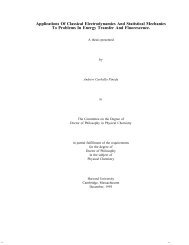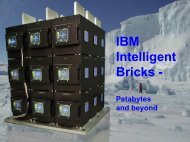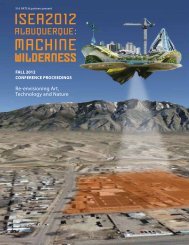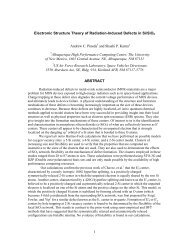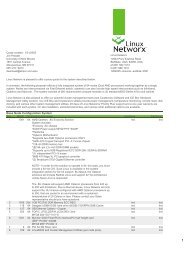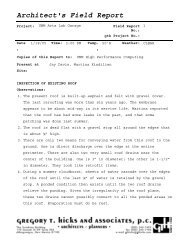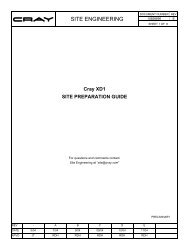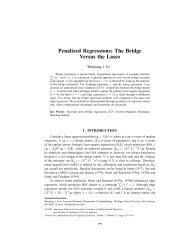Dense Matrix Algorithms -- Chapter 8 Introduction
Dense Matrix Algorithms -- Chapter 8 Introduction
Dense Matrix Algorithms -- Chapter 8 Introduction
You also want an ePaper? Increase the reach of your titles
YUMPU automatically turns print PDFs into web optimized ePapers that Google loves.
9<br />
Performance And Analysis for<br />
the Simple Algorithm<br />
• Communication:<br />
• Two all-to-all broadcasts on √p processors<br />
communication n 2 /p elements<br />
– The time taken is: 2(t s log √p + t w n 2 /p(√p–1))<br />
• Computation:<br />
• The matrix multiplications (√p multiplications of<br />
size n/√p×n/√p)<br />
– The time taken is: √p(n/√p) 3 = n 3 /p<br />
• Parallel runtime:<br />
• Approximately: n 3 /p + 2t s log √p + 2t w n 2 /√p<br />
5/6/2003 densematrix 17<br />
Cost and Isoefficiency Function<br />
For The Simple Algorithm<br />
• Cost:<br />
• Approximately: n 3 + 2pt s log √p + 2t w √p n 2<br />
• Cost optimal:<br />
• Provided p = O(n 2 )<br />
• Isoefficiency: Ω(p 3/2 )<br />
• From t s term: t s p log p<br />
• From t w term: 8 t w 3 p 3/2 = Θ(p 3/2 )<br />
• From degree of concurrency: Ω(p 3/2 )<br />
• Memory:<br />
• Every processor uses: 2 √p (n/ √p) 2 = Θ(n 2 / √p)<br />
5/6/2003 densematrix 18




